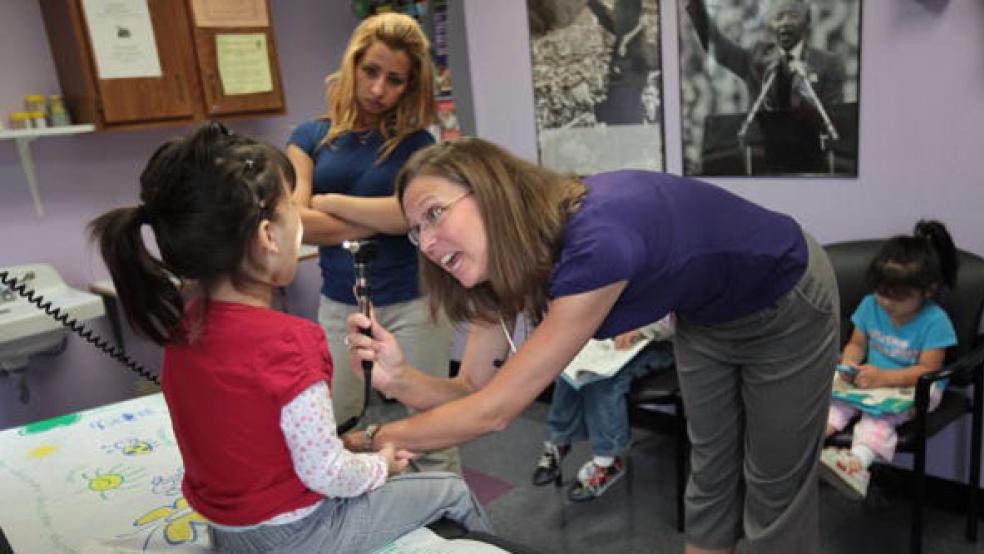One of the most important developments in Medicaid’s 50-year history has been the Obamacare provision that allows states, if they choose, to greatly expand their health insurance coverage to virtually all low-income families and individuals below retirement age.
Once limited to primarily low-income children and some parents, poor pregnant women and the disabled, today 30 states and the District of Columbia are making coverage available to just about anyone whose income is below 138 percent of the poverty line.
Related: The Great State Divide Over Expanded Medicaid
With strong backing from the federal government -- which will fund the entire cost of the expansion through 2016 -- state and local officials are making more creative use of the billions of dollars of fresh funds being poured into the massive health care system for the poor and disabled.
In some cases, officials and policy makers are experimenting with the way they target spending to take a more holistic approach to helping disadvantaged Americans overcome not only medical problems but other serious obstacles to a better, more self-sufficient lifestyle.
A remarkable case in point: Some cities and communities with large homeless populations are using Medicaid funds to help chronically homeless people find permanent homes.
According to a recent report by the Pew Charitable Trusts’s Stateline publication, this idea already has been employed in several major cities including Chicago and Cleveland and throughout Massachusetts, Minnesota and Washington state. In most cases, local nonprofit organizations have worked to provide both housing and health care to homeless people.
Advocates for the poor say it’s almost impossible to separate consideration of an individual’s health issues and living conditions – particularly for the chronically homeless, many of whom suffer from mental illness or addiction as well as other health problems. Often they must be off the street and in a stable environment in order to receive the necessary medical and psychological treatment.
Related: More than 500,000 people homeless in the United States
The Department of Housing and Urban Development reported last week that while overall homelessness dropped by two percent or 11,742 people this year compared to last year, it nevertheless increased in 17 states. New York had the largest increase, of 7,660 people, followed by California, with 1,786 more homeless.
“Frankly, we used to underestimate the stabilizing impact that housing has,” Joe Finn, president of the nonprofit Massachusetts Housing and Shelter Alliance, told Stateline. “If we can keep people housed, some of these other things tend to work out better.”
Besides helping homeless people to apply for housing and understand the details of their leases, advocates are teaching them how to co-exist with neighbors and buy and prepare healthful food, according to the report.
Related: Audit Uncovers $124.7 B of Overpayments and Fraud in Medicare and Medicaid
State and local officials and advocates deserve a lot of credit for their creative thinking in providing social and health care services. Yet some skeptics might legitimately fret that the new approach could invite fraud or misuse of federal funds – a problem that is common to Medicaid, Medicare and other major federal government programs -- and costs taxpayers hundreds of billions of dollars.
The turning point in the effort came after the federal Centers for Medicare and Medicaid Services (CMS) told Medicaid offices throughout the country that Medicaid dollars could be used to assist chronically homeless people and others with long-term disabilities to find permanent housing, according to Stateline. That announcement came in response to requests from California and New York, which had urged the agency to allow that Medicaid money be used to build housing or pay rent for the homeless.
Federal officials refused to go that far with Medicaid funding. Yet even without federal assistance, New York officials took action using state Medicaid funds on housing projects and other efforts, according to Stateline.





